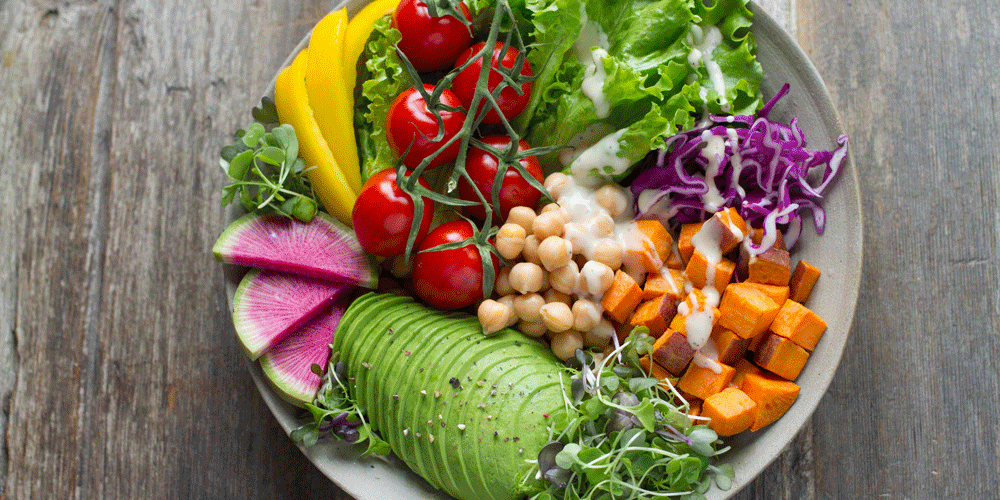How to Eat Healthy on a Budget: 7 Quick & Easy Tips

Are you wanting to eat healthier, but the expenses of healthy foods keep getting in your way? We got you covered. In this article, we provide you with seven tricks of the trade on how to eat healthy on a tight budget. Now some of these may seem obvious, but if you’re like me and have little to no self-control when it comes to yummy foods, you probably need to be reminded once or twice about these tips!
1. Stop shopping when you’re hungry
First and foremost, you need to stop grocery shopping when you are feeling hungry. Instead, try to eat a nutritious snack or meal before you go to the store. Studies have shown that when you shop when you’re hungry, you are more likely to buy more items and spend more money. You could easily stray from your original grocery list and purchase more items on impulse.
In a research article published in Psychological and Cognitive Sciences, Norbert Schwarz, Provost Professor of Psychology at USC, found that hunger can not only force you to buy more food, but can even promote acquisition of nonfood objects, as well. Results from his study concluded that shoppers who reported being hungry had spent 64% more money and had bought more non-food related items.
The lesson is: Don’t shop when you’re hungry and you will save more money!
2. Stop going out to eat for every meal
You probably saw this one coming, but it’s so important to start cooking your meals at home more. I know going out to eat at a nice restaurant sounds like a great idea every time, but in the long run, you are spending way more money than you should be.
Try making a list of the things you want to eat for the week and cook your meals at home. If you are worried about your time management, you can even cook your meals for the entire week the weekend before.
Typically, two meals at a restaurant would cost about the same as four meals at home. Try to make it a habit to cook at home. It’s way cheaper than dining out, and you can save a lot more money.

3. Make a shopping list and stick to it
Walking into a grocery store with no idea in mind of what you want to buy is not the smartest move. When you don’t have a guideline to stick to, it can lead to unintended purchases and expense.
Plan out your meals and a create shopping list to go along with it. By doing this, you can figure out what you do and don’t already have at your home, allowing you to avoid purchasing excess items. According to research, creating a grocery list and sticking to it can reduce your food expenses by 25-30%.
Planning ahead will help steer you away from unhealthy and out-of-budget food items, which will pay off on all your money saving wishes.
Stick to your list, save money, no impulse buys.
4. Buy more generic brands
Start buying more generic or store brands. You can save a decent amount of money if you stick to purchasing more generic brands and products.
People might try telling you there’s a difference, but I’m here to tell you the truth—there’s really not. In most cases, the difference between name brand and generic brand items is simply the packaging that it comes in. If you’re still feeling uncertain about trying out generic brands, you can take a simpler approach and start with smaller staple items such as spices, flour, sugar, and oil. Even this small change can make a big difference in saving you money.
Accomplished lifestyle writer and smart shopper, Trae Bodge, says, “You can save anywhere from 10% to 30% on price if you’re buying generic.” Now I don’t know about you, but that sounds pretty good to me, considering the goal is to eat healthy and save money!
5. Say no to that $5 Starbucks coffee

I get it. Everyone loves Starbucks. It’s not only delicious, but extremely convenient, as well.
I know your venti iced white mocha with caramel drizzle tastes so good, but there’s a sole reason for that: so much sugar! On average, this specific drink contains 560 calories and 70 grams of sugar in a 24 oz serving. Consuming that much sugar in one drink on a regular basis is very unhealthy and could lead to various health consequences.
According to the American Heart Association, the recommendations for sugar intake stand as this: 36 grams of added sugar per day for men, and only 25 grams per day for women. This means that you could be consuming up to 3 times as much sugar as the AHA encourages, just by drinking one Starbucks drink.
You daily Starbucks habit is also costing you a lot more money than you probably realize. In an article from Cliffs & Pebble, the Coffee Guy provides us with the average amount of money you spend every single year purchasing Starbucks. If your daily go to order is a venti-sized drink, you will likely spend around $1,577 annually on your morning coffee.
Not only is Starbuck’s coffee unhealthier than most at home options, but it is also a lot more expensive. Start making your everyday coffee at home, and I promise your bank account will thank you.
6. Buy more frozen foods
Don’t be afraid to purchase frozen food options. Fresh fruits and vegetables are usually only in season for a few months out of the year and tend to be on the expensive side. When it comes to these types of foods, frozen alternatives can be a cheaper and even healthier option.
Frozen goods usually cost less and last a lot longer than fresh produce. Many frozen fruits and vegetables come in resealable packaging, which allows you to eat what you need and store the rest, saving you money and reducing waste.
Frozen foods can be a great way to eat healthy on a budget!
7. Grow your own garden
Last, but certainly not least, is my favorite tip on this list: Try growing your own personal garden.
If you are able, grow your own fruits and vegetables and you will always have fresh produce at your fingertips. You don’t even need a yard to start growing a garden. Many fruits and vegetable plants can be grown in pots out on your deck or patio. This can be a great transition for those individuals just starting out.
By maintaining a fresh produce garden, you could cut out a large part of your grocery bill. The average American household spends around $6,700 a year on food, according to the Consumer Expenditure Survey. Of that, around $750 is spent on fruits and vegetables alone. By having a constant supply of fresh produce at home, you will be able to cut out that portion of your shopping list and save even more money.
The bottom line
It is possible to eat healthy and save money at the same time. It doesn’t have to cost you a lot of money to eat well. Practice these tips and you will see just how easier it can be to eat healthy on a tight budget.
If you want more tips on eating healthy, check out another blog post from illustratednutrition.com ---The Ultimate Guide to Eating Healthy: 10 Shopping Tips for the Smart Sister
Happy saving!
